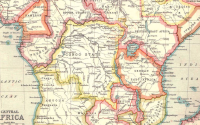11 December 2005Yahoo News
Portugal is turning to wind, wave and solar power to reduce its huge dependence on oil imports and meet its international commitments to reduce carbon dioxide emissions.
The world's first commercial wave power plant is set to begin operating off Portugal's northern coast in 2006 while work on the world's biggest solar power station will begin in the sunny south of the country next year.
But the bulk of the 2.5 billion euros (2.9 billion dollars) in private and public funds that the government of Prime Minister Jose Socrates set aside in July to develop renewable energy will go towards wind energy development.
The goal is to increase the share of electricity produced from renewable energy sources in Portugal to 39 percent, as required by the UN Kyoto Protocol, from the roughly 30 percent expected this year.
The wave power plant will be set up by a Portuguese consortium in the Atlantic about five kilometres (three miles) from the town of Povoa de Varzim and it will generate 2.25 megawatts of power from 2006 -- enough to supply 1,500 homes.
The project will use three wave power generators supplied by Scottish firm Ocean Power Delivery for eight million euros (9.4 million US dollars).
The generators look like giant floating sausages and they rock with waves, pumping water to hydraulic motors that drive generators to produce electricity.
If the initial phase is successful, the consortium, led by renewable energy group Enersis, said it will order 30 more Pelamis P-750 generators by the end of 2006.
The government wants waves to provide 50 megawatts of power by 2010 but experts believe the country has the potential to produce far more wave energy because it has deep waters just off its shores that generate strong swells.
"Portugal is in a privileged place when it comes to wave energy," the head of the Portuguese Renewable Energy Association (APREN), Antonio Sa da Costa, told AFP.
Wave power could supply Portugal, a nation of 10.5 million, with 20 percent of its annual electricity needs, according to a study by the Wave Energy Centre, a non-profit group dedicated to the promotion of the energy source.
Meanwhile in October the government granted an operating licence for a solar energy power station to be set up in the thinly-populated Alentejo, a southern province of rolling hills that is one of Europe's sunniest regions.
"This is an innovative project," Economy Minister Manuel Pinho said at the time.
The 250 million euro project will have 350,000 solar panels spread over 114 hectares (280 acres) near the town of Moura and will produce 62 megawatts, or enough power for 21,000 homes.
The world's biggest existing solar power plant in Germany only produces a sixth of this power, according to Amper, the firm building the Moura plant.
While the government wants solar power to generate 150 megawatts of power by 2010, up from just 2.3 today, it is aiming for a nearly four-fold increase in wind power capacity to 3,750 megawatts during the same time.
To achieve this, Lisbon in September launched an international tender for three large wind parks -- one for 1,000 megawatts of capacity, one for 500 megawatts and a third for 200 megawatts to be shared between small producers.
Portugal is among the nations in Europe where wind energy is going to expand the most over the coming years, according to the Brussels-based European Wind Energy Association.
Green groups welcome the development of renewable energy sources but experts caution they have drawbacks which could slow their development.
Unlike hydro power, Portugal's main renewable energy source, power produced from wind, waves and the sun cannot be easily stored, Sa da Costa said.
Alternative sources of energy also suffer from difficulties in connecting to the main electricity grid and lengthy licencing times, he added.
It can take up to three years for a wind farm to get final approval, according to APREN, which wants the detailed environmental assessments required of developers to be streamlined.
"The best places to set up a wind farm are often in mountainous regions with lots of wind which are also the most difficult regions to get licensing," Sa da Costa said.
Despite the drawbacks, both EDP-Energias de Portugal, the nation's main electricity provider, and Galp Energia, its main oil and natural gas company, have shown interest in the wind farm licences.
Last year oil made up 58 percent of Portugal's primary energy consumption, making it one of the most dependent nations on fossil fuels in the 25-member European Union, economy minister figures show.






